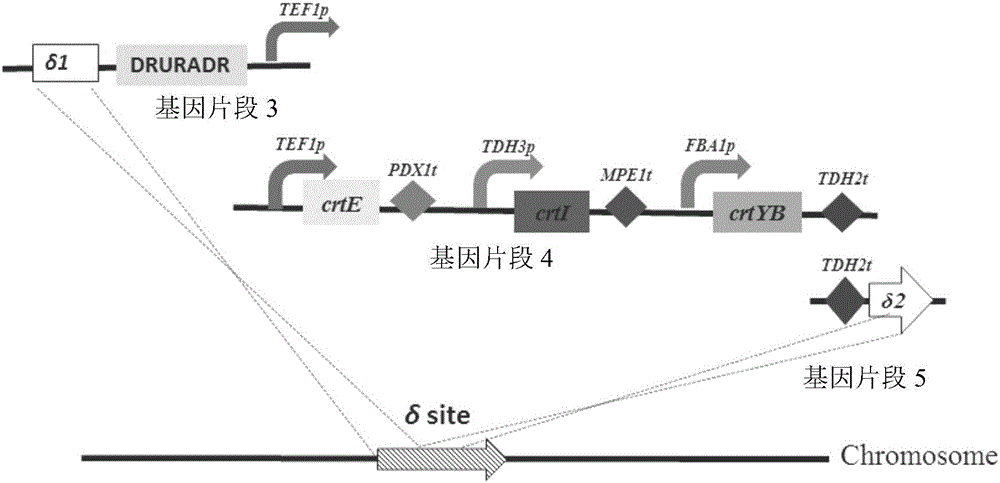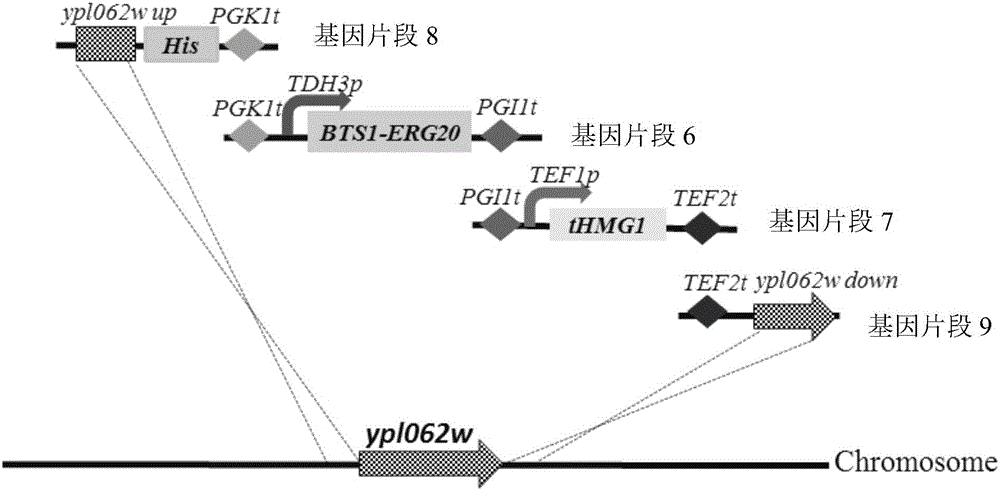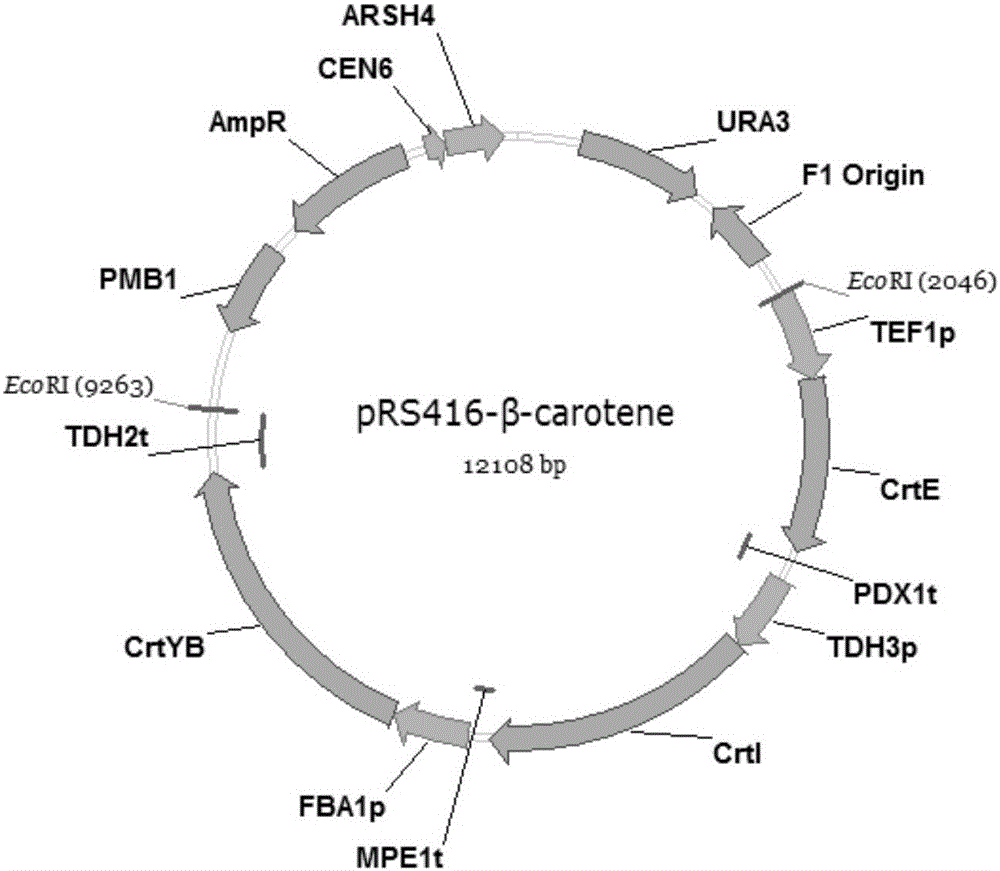Recombinant yeast strain, and building method and application thereof
A kind of yeast strain and yeast technology, applied in the field of genetic engineering, can solve the problems of increasing cost and not being able to improve the economic benefits of β-carotene, and achieve the effect of high yield
- Summary
- Abstract
- Description
- Claims
- Application Information
AI Technical Summary
Problems solved by technology
Method used
Image
Examples
Embodiment 1
[0071] Embodiment 1: Construction of gene fragment 3 and gene fragment 5 (construction of upstream and downstream homology arms of Delta site)
[0072] The 248bp homologous sequence Delta1 upstream of the Delta site, the URA3 tag DRURA3DR with a frameable frame (5-FOA can be used for screening to knock out the strain of the screening marker) and the promoter TEF1p were spliced together by OE-PCR method and spliced at both ends Add the NotⅠ enzyme cutting site, connect it into the vector pEasyBlunt, and obtain the upstream homology arm vector of the Delta site (gene fragment 3 can be obtained after enzyme cutting);
[0073] The terminator TDH2t and the 239bp homologous sequence Delta2 downstream of the Delta site were spliced together by OE-PCR method, and NotI restriction sites were added at both ends, and connected into the vector pEasyBlunt to obtain the homologous arm vector downstream of the Delta site (enzyme Gene fragments can be obtained after cutting 5).
[0074...
Embodiment 2
[0081] Embodiment 2: Construction of gene fragment 4
[0082] Step 1.1, the promoter TEF1p, XdCrtE, and terminator PDX1t are sequentially spliced together by OE-PCR method to obtain the fragment P TEF1p -XdCrtE-T PDX1t ,spare;
[0083] The terminator PDX1t homologous sequence, promoter TDH3p, XdCrtI, terminator MPE1t, and promoter FBA1p homologous sequences were spliced sequentially by OE-PCR to obtain the fragment terminator PDX1t homologous sequence-P TDH3p -XdCrtI-T MPE1t -Promoter FBA1p homologous sequence, spare;
[0084] The promoter FBA1p, XdCrtYB, and terminator TDH2t were sequentially spliced together by OE-PCR to obtain the fragment P FBA1p -XdCrtYB-T TDH2t ,spare;
[0085] Step 1.2, by PCR in fragment P TEF1p -XdCrtE-T PDX1t The homologous sequence 40bp upstream of the EcoRI restriction site in the vector pRS416 and the EcoRI restriction site were added before the promoter of the vector pRS416, and the upstream homologous sequence of the EcoRI restrict...
Embodiment 3
[0088] Example 3: Integration of gene segments 3-5 to construct a transitional recombinant Saccharomyces cerevisiae strain
[0089] The gene fragment 3-5 was transferred into BY4741 yeast by the lithium acetate method, and the homologous sequence in the gene fragment 3-5 was connected into gene fragment 1, namely Delta1-URA3 tag-PTEF1p -XdCrtE-T PDX1t -P TDH3p -XdCrtI-T MPE1t -P FBA1p -XdCrtYB-T TDH2t -Delta2, and then integrated into the genome through recombination between the upstream and downstream homologous sequences of the Delta site and the Delta site on the yeast genome (see the schematic diagram figure 1 ), to obtain a transitional recombinant yeast strain;
PUM
 Login to View More
Login to View More Abstract
Description
Claims
Application Information
 Login to View More
Login to View More - R&D
- Intellectual Property
- Life Sciences
- Materials
- Tech Scout
- Unparalleled Data Quality
- Higher Quality Content
- 60% Fewer Hallucinations
Browse by: Latest US Patents, China's latest patents, Technical Efficacy Thesaurus, Application Domain, Technology Topic, Popular Technical Reports.
© 2025 PatSnap. All rights reserved.Legal|Privacy policy|Modern Slavery Act Transparency Statement|Sitemap|About US| Contact US: help@patsnap.com



